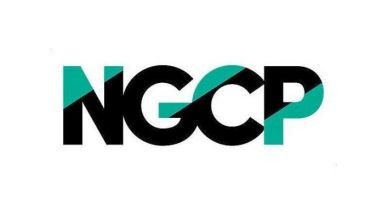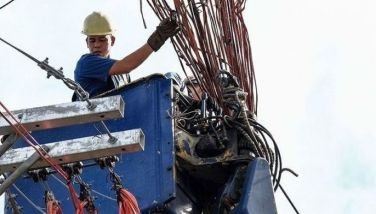Government may scrap service area scheme for telephone firms
December 10, 2000 | 12:00am
The Department of Transportation and Communications (DOTC) is looking at the possibility of scrapping the service area scheme (SAS) which required telephone companies (telcos) to install landlines in specific areas, and to replace it with a new program that will require the telcos to put up telecenters in municipalities and public calling offices in barangays.
The DOTC and the National Telecommunications Commission (NTC) are currently reviewing the SAS after many of the telephone companies failed to install lines in so-called missionary or non-profitable areas (phase three). Even in the more profitable areas, the telcos are now burdened with excess capacity.
NTC Deputy Commissioner Nestor Dacanay told The STAR that the alternative schemes to the SAS will be decided upon next month.
Right now, Dacanay said government has yet to decide on how to deal with companies which installed the required number of lines but only in highly profitable (phase one) and less profitable (phase two) areas.
Government is also looking at a system of rewards and penalties for those which were able to install the required number of lines before the 1998 deadline, those which were able to catch up with the requirements only between 1998 and now, as well as those which failed to meet their commitments.
All international gateway facility (IGF) and cellular mobile telephone system (CMTS) providers were required to lay down at least 300,000 and 400,000 lines, respectively. Under the SAS, the country was divided into 11 areas with each of the nine new local exchange carriers (LECs) given specific areas where they can operate.
However, with the sudden boom in cellular phones and the economic crisis, the demand for fixed phone lines has dropped significantly, resulting in poor subscriber take up.
"All along, government thought that the demand was there, especially in poor areas. But as it turned out the P300 to P400 installation fee was too much, especially with the economic crunch," industry observers note.The SAS was also supposed to be subsidized by revenues earned by telcos from their international operations. However, international toll revenues dropped after the accounting rate was reduced from $1 per minute to only 38 cents a minute. The accounting rate is the amount shared by the local and foreign carrier for each minute of call processed.
This threatened the profitability of international service since at that time, the companies were earning as much as 500 percent per minute," NTC Common Carrier Accreditation Department head Edgardo Cabarrios said. This, he said, also threatened the ability of international service to subsidize local services.
Right now, he revealed that telephone companies are not making money from their landline services. Instead, their cellular phone service is the one making money and is in effect subsidizing the landline service.
Cabarrios said that since the telephone companies already poured in huge investments in their telephone network, they are now charging rates that are just enough to cover cost. This is the reason why companies like the Philippine Long Distance Telephone Co. (PLDT) are offering huge discounts of up to 50 percent on installation charges.
Right now, only 54 percent of the different towns and cities have telephone lines as against their target 85 percent coverage under the service area scheme. And because many of the companies installed their lines in the same profitable areas, there is an overcapacity in these areas. Of the 6.8 million lines installed, only a little over three million are subscribed.
Eastern Telecommunications Phils. Inc. (ETPI), which was assigned in Manila, Caloocan, Malabon, and the whole Cagayan Valley region put up only 70,000 of the required 300,000 landlines as of September, but still had overcapacity after realizing only 23,000 customers.
The service area scheme was implemented sometime in 1993 under Executive Order No. 109 to address the growing backlog in telephone services and acute lack of telephone lines. The additional demand for lines at that time was placed at two million lines.
Government’s idea was for those engaged in more profitable businesses such as international direct dial services and cellular phones to provide telephone lines to certain areas in three phases for three years ending in 1998. The first phase would cover areas considered profitable such as central business districts; the second phase, the less profitable areas; and the third phase, the missionary areas or non-profitable areas.
"But what happened is that, since their compliance is base on the number of lines they install, many companies installed lines under phase 1 and 2 or the more profitable areas and neglected phase 3," Cabarrios said.
Whether this is an acceptable mode of compliance, he said, is a legal question that is being discussed by the NTC. But according to NTC’s Dacanay, it was very clear from the start the certain number of lines were to be installed in specific areas.
The DOTC and the National Telecommunications Commission (NTC) are currently reviewing the SAS after many of the telephone companies failed to install lines in so-called missionary or non-profitable areas (phase three). Even in the more profitable areas, the telcos are now burdened with excess capacity.
NTC Deputy Commissioner Nestor Dacanay told The STAR that the alternative schemes to the SAS will be decided upon next month.
Right now, Dacanay said government has yet to decide on how to deal with companies which installed the required number of lines but only in highly profitable (phase one) and less profitable (phase two) areas.
Government is also looking at a system of rewards and penalties for those which were able to install the required number of lines before the 1998 deadline, those which were able to catch up with the requirements only between 1998 and now, as well as those which failed to meet their commitments.
All international gateway facility (IGF) and cellular mobile telephone system (CMTS) providers were required to lay down at least 300,000 and 400,000 lines, respectively. Under the SAS, the country was divided into 11 areas with each of the nine new local exchange carriers (LECs) given specific areas where they can operate.
However, with the sudden boom in cellular phones and the economic crisis, the demand for fixed phone lines has dropped significantly, resulting in poor subscriber take up.
"All along, government thought that the demand was there, especially in poor areas. But as it turned out the P300 to P400 installation fee was too much, especially with the economic crunch," industry observers note.The SAS was also supposed to be subsidized by revenues earned by telcos from their international operations. However, international toll revenues dropped after the accounting rate was reduced from $1 per minute to only 38 cents a minute. The accounting rate is the amount shared by the local and foreign carrier for each minute of call processed.
This threatened the profitability of international service since at that time, the companies were earning as much as 500 percent per minute," NTC Common Carrier Accreditation Department head Edgardo Cabarrios said. This, he said, also threatened the ability of international service to subsidize local services.
Right now, he revealed that telephone companies are not making money from their landline services. Instead, their cellular phone service is the one making money and is in effect subsidizing the landline service.
Cabarrios said that since the telephone companies already poured in huge investments in their telephone network, they are now charging rates that are just enough to cover cost. This is the reason why companies like the Philippine Long Distance Telephone Co. (PLDT) are offering huge discounts of up to 50 percent on installation charges.
Right now, only 54 percent of the different towns and cities have telephone lines as against their target 85 percent coverage under the service area scheme. And because many of the companies installed their lines in the same profitable areas, there is an overcapacity in these areas. Of the 6.8 million lines installed, only a little over three million are subscribed.
Eastern Telecommunications Phils. Inc. (ETPI), which was assigned in Manila, Caloocan, Malabon, and the whole Cagayan Valley region put up only 70,000 of the required 300,000 landlines as of September, but still had overcapacity after realizing only 23,000 customers.
The service area scheme was implemented sometime in 1993 under Executive Order No. 109 to address the growing backlog in telephone services and acute lack of telephone lines. The additional demand for lines at that time was placed at two million lines.
Government’s idea was for those engaged in more profitable businesses such as international direct dial services and cellular phones to provide telephone lines to certain areas in three phases for three years ending in 1998. The first phase would cover areas considered profitable such as central business districts; the second phase, the less profitable areas; and the third phase, the missionary areas or non-profitable areas.
"But what happened is that, since their compliance is base on the number of lines they install, many companies installed lines under phase 1 and 2 or the more profitable areas and neglected phase 3," Cabarrios said.
Whether this is an acceptable mode of compliance, he said, is a legal question that is being discussed by the NTC. But according to NTC’s Dacanay, it was very clear from the start the certain number of lines were to be installed in specific areas.
BrandSpace Articles
<
>
- Latest
- Trending
Trending
Latest
Trending
Latest
Recommended
























